Saltwater Fishing Lures
Discover the different types of saltwater fishing lures available. When choosing saltwater lures or bait, consider how fish feed. Fish detect a meal in three ways — by scent, sound and movement. Learn more in this section.
Types Of Saltwater Fishing Lures
These are the different types of saltwater fishing lures you can use to catch different fish species. Learn about the advantages and disadvantages of using each type of fishing lures.
1. Lead-Headed Jigs
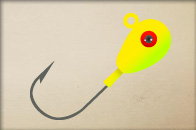 Jigs are probably the most popular of the artificial saltwater fishing lures. Consisting of a hook with a lead head and a trailer, jigs imitate everything from saltwater bait fish to crustaceans to invertebrates. A streamlined jig head will sink faster, while a wider head will flutter down or work higher in the water column. A jig with deer hair tied to its head is called a bucktail. The size of the hook on the jig should match the size of the trailer. Thread the trailer on the jig so that the hook comes out of the trailer ahead of the bend. When using a strip bait trailer, pass the hook once through the wide end of the trailer.
Jigs are probably the most popular of the artificial saltwater fishing lures. Consisting of a hook with a lead head and a trailer, jigs imitate everything from saltwater bait fish to crustaceans to invertebrates. A streamlined jig head will sink faster, while a wider head will flutter down or work higher in the water column. A jig with deer hair tied to its head is called a bucktail. The size of the hook on the jig should match the size of the trailer. Thread the trailer on the jig so that the hook comes out of the trailer ahead of the bend. When using a strip bait trailer, pass the hook once through the wide end of the trailer.
The newest generation of jigs, which feature squid-shaped heads and living-rubber skirts, make great saltwater fishing lures. “Living rubber” is extremely pliant, soft rubber that moves in a lifelike manner. Drop one of these rubber jigs to the bottom and crank it up a few feet, then pause for a few seconds before dropping it again. Fish see the jig hovering over the bottom and come in to investigate. They will often nibble their way up the skirt to the hook, so use a light drag and a soft-tipped rod to feed the fish.
2. Metal Jigs
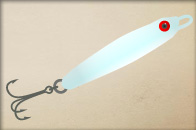 Metal jigs are saltwater fishing lures that can be bounced across the bottom or cast out and worked back. Deeper jigs will be narrow, while casting jigs are wider. It is a good idea to add a short piece of leader and a swivel to the jig to keep it from twisting the line. The latest generation of jigs, called vertical jigs, are the best saltwater lures to use when you need a jig that can be worked through the water very quickly while jerking the rod up and down. These saltwater lures usually have a hook attached to a short piece of braided line and a split ring at the top of the jig. Always tie a leader to the split ring on these jigs so that when you're fighting a fish, you're not also fighting the weight of the jig.
Metal jigs are saltwater fishing lures that can be bounced across the bottom or cast out and worked back. Deeper jigs will be narrow, while casting jigs are wider. It is a good idea to add a short piece of leader and a swivel to the jig to keep it from twisting the line. The latest generation of jigs, called vertical jigs, are the best saltwater lures to use when you need a jig that can be worked through the water very quickly while jerking the rod up and down. These saltwater lures usually have a hook attached to a short piece of braided line and a split ring at the top of the jig. Always tie a leader to the split ring on these jigs so that when you're fighting a fish, you're not also fighting the weight of the jig.
3. Poppers
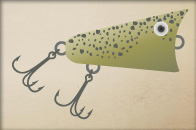 Popping plugs, or “poppers,” are saltwater fishing lures that splash across the surface, drawing a reaction bite from aggressive predators, and work best at dawn and dusk when fish are more likely to feed on the surface. To work a popper, reel at a steady pace while jerking the rod tip to make the lure splash and chug. “Walking the Dog” is a special technique used with torpedo-shaped top water plugs. Hold the rod with the tip pointing toward the water and retrieve line while jerking the tip from left to right, making the fishing lure zigzag across the surface.
Popping plugs, or “poppers,” are saltwater fishing lures that splash across the surface, drawing a reaction bite from aggressive predators, and work best at dawn and dusk when fish are more likely to feed on the surface. To work a popper, reel at a steady pace while jerking the rod tip to make the lure splash and chug. “Walking the Dog” is a special technique used with torpedo-shaped top water plugs. Hold the rod with the tip pointing toward the water and retrieve line while jerking the tip from left to right, making the fishing lure zigzag across the surface.
4. Plug Fishing Lures
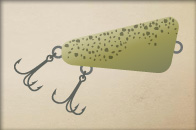 Plug fishing lures are carved out of wood or molded out of plastic to imitate the shape and action of a swimming fish. Some plugs use a plastic or metal lip to dive deeper. Other plugs use rattles, even lights and electronic vibrations, to attract fish. Most plugs are specially designed to troll or retrieve at a specific speed, making them ideal saltwater trolling lures. Since plugs get their action from their design, they don't usually require any extra action from you. Simply cast the plug out and retrieve at a steady pace. Offshore anglers troll big plugs with hard plastic heads and rubber skirts. These saltwater lures can be rigged with a natural bait or left bare.
Plug fishing lures are carved out of wood or molded out of plastic to imitate the shape and action of a swimming fish. Some plugs use a plastic or metal lip to dive deeper. Other plugs use rattles, even lights and electronic vibrations, to attract fish. Most plugs are specially designed to troll or retrieve at a specific speed, making them ideal saltwater trolling lures. Since plugs get their action from their design, they don't usually require any extra action from you. Simply cast the plug out and retrieve at a steady pace. Offshore anglers troll big plugs with hard plastic heads and rubber skirts. These saltwater lures can be rigged with a natural bait or left bare.
5. Spoon Fishing Lures
.jpg) Like the name implies, spoons are concave metal saltwater fishing lures that are usually wider at one end to wobble and flash like a swimming fish. Spoon lures come in two styles: casting and trolling. Casting spoon lures are heavier than trolling spoons and can be thrown a longer distance. Trolling spoons are either high speed or slow speed. High-speed spoon lures are narrower and heavier than slow-speed models.
Like the name implies, spoons are concave metal saltwater fishing lures that are usually wider at one end to wobble and flash like a swimming fish. Spoon lures come in two styles: casting and trolling. Casting spoon lures are heavier than trolling spoons and can be thrown a longer distance. Trolling spoons are either high speed or slow speed. High-speed spoon lures are narrower and heavier than slow-speed models.
If you're trolling a spoon behind a weight, use a long leader to get the lure far away from the other tackle. Casting spoons work great when you need to imitate a small bait, as they can be cast out and retrieved, or dropped to the bottom and bounced. These types of saltwater lures should be used with high-quality snaps and swivels to avoid line twist.
6. Spinnerbaits
.jpg) Stealing a tactic from the freshwater playbook, saltwater anglers are using spinnerbaits for fishing a variety of inshore species. Featuring a leadhead, wire arm and metal blade, a spinnerbait does not look like anything that swims; instead, this newest saltwater fishing trick fools a fish's sense of sound and movement. The leadhead is usually dressed in a soft plastic jig or rubber skirt. The arm and blade should be made from non-corrosive material. Cast out a spinnerbait and work it quickly to propel it across the surface or retrieve it slowly to drag the jig along the bottom.
Stealing a tactic from the freshwater playbook, saltwater anglers are using spinnerbaits for fishing a variety of inshore species. Featuring a leadhead, wire arm and metal blade, a spinnerbait does not look like anything that swims; instead, this newest saltwater fishing trick fools a fish's sense of sound and movement. The leadhead is usually dressed in a soft plastic jig or rubber skirt. The arm and blade should be made from non-corrosive material. Cast out a spinnerbait and work it quickly to propel it across the surface or retrieve it slowly to drag the jig along the bottom.
7. Soft Plastic Lures
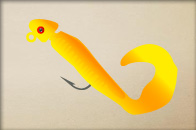 Another of the top saltwater lures on the market, soft plastic lures come in a variety of colors, shapes and sizes and can be used in many ways. Twister tails and shad bodies make good lure additions to jigs and bucktails. Flukes also look good as a trailer, or they can be rigged on a hook without any weight to sink slowly or shoot across the surface. Swimbaits feature a lead-head jig molded inside a soft plastic body. Use a soft plastic that matches the size of the bait.
Another of the top saltwater lures on the market, soft plastic lures come in a variety of colors, shapes and sizes and can be used in many ways. Twister tails and shad bodies make good lure additions to jigs and bucktails. Flukes also look good as a trailer, or they can be rigged on a hook without any weight to sink slowly or shoot across the surface. Swimbaits feature a lead-head jig molded inside a soft plastic body. Use a soft plastic that matches the size of the bait.
These baits come in a variety of colors, sizes and shapes. Bright colors work best on sunny days while darker colors present a better silhouette against overcast or dark skies. Soft plastics can be cast and retrieved, dropped to the bottom and bounced, even used in place of live or cut bait. The only limit to the way these saltwater fishing lures can be used is your own imagination.
Learn more about different types of deep sea fishing lures to use when trolling, and offshore fishing.
KEEP LEARNING

How to Tie the Non-Slip Loop Knot
The non-slip loop knot is a popular and reliable choice for securing hooks, lures, and other tackle to your fishing line.
LEARN MORE

Socials
Take me fishing social media links
LEARN MORE

TakeMeFishing x Teen Vogue
Join us on a creative journey as fashion designer Ahmrii Johnson walks us through her collaborative vision and process with Teen Vogue and fashion brand, Rentrayage, to create a special piece.
LEARN MORE

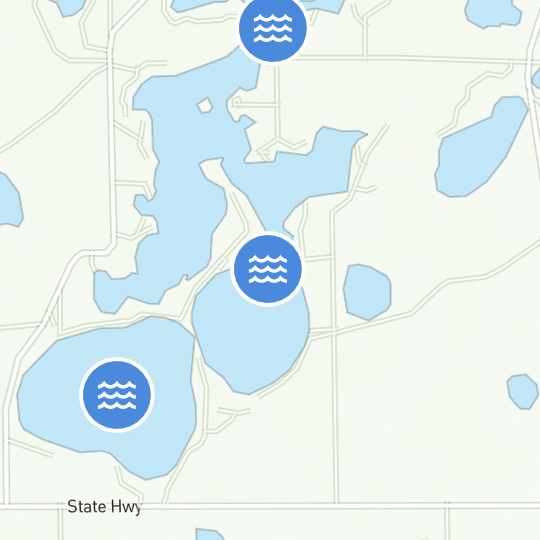
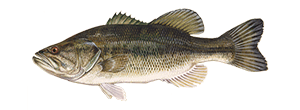.png?lang=en-US&ext=.png)